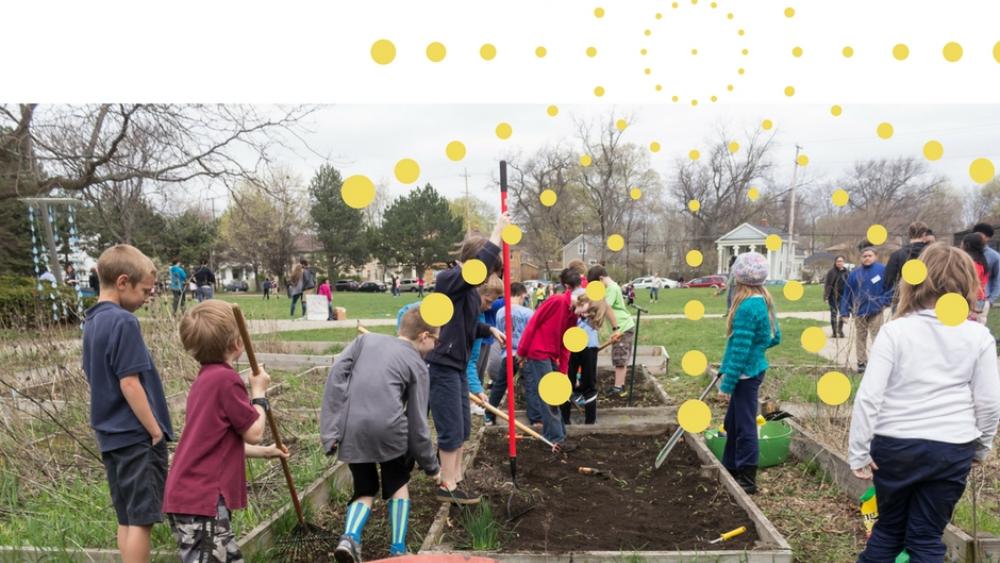What is something that makes you excited to get up in the morning and gives you energy? Whatever that vision is, that is your "spark." Kids may not know what their spark is today, and it may change many times over their life, but we can start today to explore how generosity could spark meaning in your kids' day and life.
Learning to Give's tools help develop each person's unique "spark" through a variety of giving experiences and awareness of the role of generosity in an impactful life. All youth are capable of using their strengths and passions to impact their community and shape a brighter future. Philanthropy education and service-learning help youth explore the relationship between self-identity and their role in community. These experiences and reflections help the next generation light up the world while they build self-awareness, empathy for others, responsible decision-making, and confidence in their ability to make a difference.
In his TED talk, Peter L. Benson - president and CEO of Minneapolis-based Search Institute and author and editor of more than a dozen books on child and adolescent development and social change - inspires us to have conversations with kids about their "spark." As a companion to this talk, Learning to Give, a philanthropy education resource, provides many tools and ideas for initiating "spark" discussions with youth of all ages.
Your spark is what gives you joy and makes you thrive. But what is it? How do you find it? How do you help youth find theirs? What can you do to nurture it? Start by asking these three simple questions:
- What is something that gets you up in the morning eager to take on the day?
- What gives you joy and energy?
- What gives you hope and purpose?
These questions may seem difficult to answer at first, but with conversation, experience, and self-reflection, the sparks will come to light.
“You have to find what sparks a light in you so that you in your own way can illuminate the world.” ― Oprah Winfrey
Developing and nurturing one's spark is the result of a three-part formula: First, you have to know your spark. Second, you need three champions (such as family, school, and community) who help you develop your spark. Third, you must have the opportunity and the freedom to develop your spark. When you facilitate youth to follow this formula, they not only find their spark, they thrive with it and experience personal and school success, engagement, compassion, and a sense of purpose.
- Identify your spark.
- Enlist three champions.
- Seek opportunity to explore your spark and get permission for freedom to work toward the spark.
As educators and facilitators of youth, it is our role to develop well rounded, knowledgeable, community-oriented citizens. This is why nurturing youth spark is key. A spark is motivating and useful to the individual and the world. Our communities, institutions, and world are served best by individuals who find their spark and make a positive impact.
In most cases, innovation comes from a spark: a lightbulb moment, an experience, or a passion that drives research and reflection. With innovation comes change. With curiosity and openness to innovative change, our communities become more inclusive, accepting, tolerant, happy places.
At Learning to Give, developing and nurturing one's spark is built-in to the philanthropy themes that guide all our content - from individul to community generosity:
Philanthropy Themes:
I: Definitions of Philanthropy
II: Philanthropy and Civil Society
III: Philanthropy and the Individual
IV: Volunteerism and Service
Philanthropy practice is generally described as giving time, talent, or treasure for the common good. At Learning to Give, we provide activities to help youth develop a variety of philanthropy muscles and knowledge about philanthropy, including types of service, how different cultures practice philanthropy, philanthropy's role in government and business, and the role of nonprofit organizations. Within this framework, youth are able to develop their own passions and skills (spark!). Service-learning projects provide the strategy for identifying needs in their communities and taking action.
In this TED talk young Hannah Alper inspires us to keep our dreams alive through finding our spark. This video, featuring a nine-year-old's impressive spark, will light a fire in kids to explore their own journey. After the video clip, youth can partner up and discuss how they will explore and practice their spark using the prompts above. Then, follow up regularly over time with additional spark questions:
- What is your spark?
- Did it change?
- How do you express it?
- Who knows about it?
- What gets in the way of you sharing your spark?
- How can others help?
As sharing and reflection are often vulnerable experiences, be prepared to share your own spark, trials and doubts with youth!
An individual's spark illuminates their life and the lives of those they come into contact with. Our spark helps to define who we are and gives us the confidence to be givers and doers for the common good. Learning to Give is poised to help you as youth facilitators to inspire and encourage youth to find - and live - their spark.
Use this handout to lead discussion and help youth identify and nurture their own spark!
